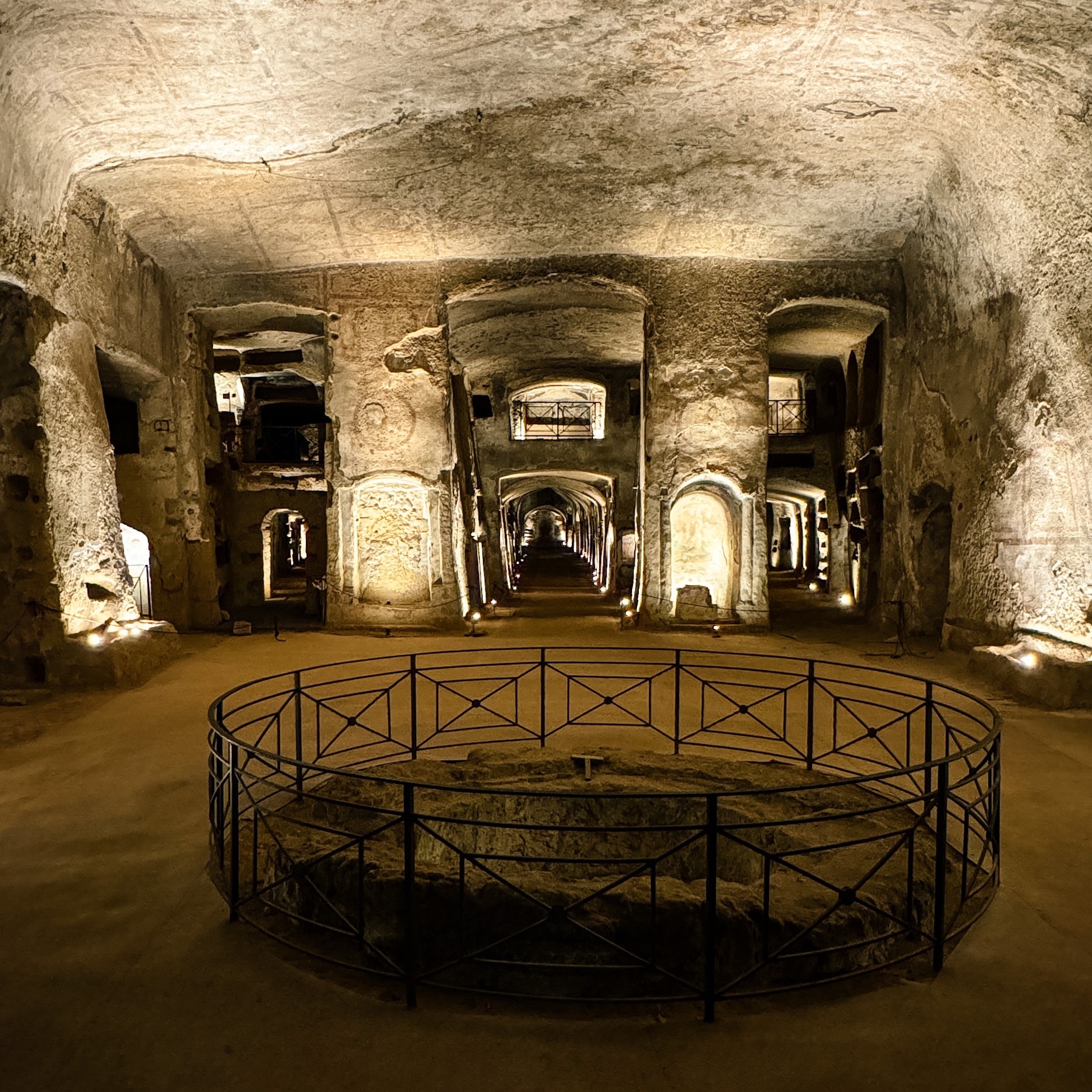A story of cooperation, active community involvement, and rediscovery of local beauty through the power of heritage interpretation.
The Sanità district in Naples had a brilliant transformation thanks to the efforts of a local priest, Father Antonio Loffredo, and a group of young people. Starting in 2001, they reopened the Catacombs of San Gaudioso, dreaming of an economy based on tourism and legality. Then they formed a cooperative, La Paranza, and then with a step up, they reopened the Catacombs of San Gennaro. This has led to the reuse of historical places for cultural and social activities, such as orchestras, theatres, and educational centres, to support local children and improve the citizenship.
The active participation of the youth, community involvement, and support from private institutions led to social, cultural, and economic growth. The Rione Sanità, once avoided, became a clear example of how cooperation and active involvement can heal communities from the inside, promoting social cohesion and regeneration.
Sanità’s history is ancient. It began as a burial site outside the city centre of Naples. Over the centuries it transformed from the “valley of the dead” into a noble suburb with beautiful palaces and courtyards. However, in the 19th century, a bridge was built over the neighbourhood, isolating it and causing a decline. For two centuries, Sanità became a neglected area.
In 2001, Father Antonio Loffredo arrived in Rione Sanità and started to highlight its forgotten beauty. He organised trips that helped the local youth appreciate their heritage. By starting with the younger generations, he gained enough support to reopen the Catacombs of San Gaudioso, letting tourists rediscover the district. This led to the birth of the La Paranza Cooperative in 2006, a group of young friends dedicated to the district’s reopening.
In 2008, significant funding from Fondazione con il Sud allowed the reopening of the Catacombs of San Gennaro. This event started a whole new tourism-based economy, bringing not only economic advantage but also social and cultural changes. New projects started, including the Sanitànsamble social orchestra and the NTS New Sanità theatre, turning historical abandoned places into cultural hubs.
Contemporary art has significantly changed the Sanità district. In 2019, a young sculptor, Jago, chose Sanità as his creative lab, collaborating with La Paranza to revitalise the neighborhood. He showed his masterpiece, The Veiled Son, in the San Severo church, boosting the touristic and cultural offer. Then Jago’s influence led to the formation of a new cooperative, La Sorte, which opened a museum dedicated to his art in the Sant Aspreno church. This provided the district with a new cultural centre and inspired the local youth. La Sorte also created new initiatives to revitalise forgotten areas, like the Cristallini street area where the Santa Maria Maddalena ai Cristallini church has re-opened as a community space. Inside, projects are offered, such as the youth choir with the ABF Foundation, connecting the opera singer Andrea Bocelli with children interested in singing, offering free lessons and supporting community growth.
In 2014, the San Gennaro Community Foundation was established to support projects for young people and social entrepreneurship. Based on principles of community participation and care for beauty, the foundation includes over 30 non-profit organisations, local traders, and educational institutions.
All this work led La Paranza to a natural growth, exiting the national borders, arriving in the European broader horizon, collecting achievements, including: being named Heritage Champion in the European Heritage Award/ Europa Nostra Award 2022, so starting new collaborations with European organisations in the cultural heritage sector; and being invited in April 2024 to tell their story at the European council, making even more relations that helped in the development processes.
Today, Sanità is a model of how a community can sustain itself using its own resources, transforming into a heritage community. This story shows the power of cooperation, active involvement, and the rediscovery of local beauty. As well as the power of good heritage interpretation to bring communities together.
Antonio Della Corte studied Cultural Heritage Management and is responsible for the formation and planning of the social cooperative, La Paranza Onlus. His field of work includes implementation of national and international projects and competitions and training of new staff. Antonio can be contacted at: formazione@catacombedinapoli.it.
Antonio Iaccarino graduated in Archaeology and Art History. He is responsible for the formation and planning of the social cooperative, La Paranza Onlus. His field of work includes implementation of national and international projects and competitions and training of new staff.
Danielenrico Moschetti has a degree in Archaeology and Art History. He works in La Paranza Cooperative, as a guide and international relations assistant. He discovered how cultural heritage flourishes through active citizenship and community heritage principles. Danielenrico can be contacted at: relazioni@catacombedinapoli.it.
To cite this article: Della Corte, Antonio & Iaccarino, Antonio & Moschetii, Danielenrico (2024) ‘Per aspera ad astra: The rebirth of Rione Sanità from neglection to rediscovery‘in Interpret Europe Newsletter 2-2024, pg.20-21.
Available online: https://interpret-europe.net/wp-content/uploads/2024/07/PDF-Newsletter-2024_2.pdf




